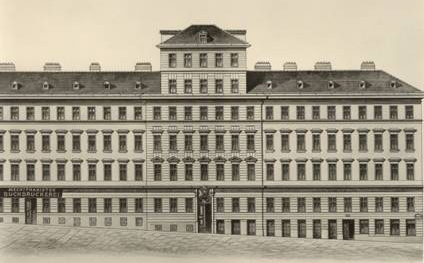No products in the cart.

In a narrow lane in the seventh district of Vienna a fine view is revealed. On top of the main door of a long building one sees acoat of arms crowned by a bishop’s mitre. It adornes the gate of the Mekhitarist monastery. For 200 years these Armenian monks have been devoted to the preservation of the Armenian heritage. Thus the monastery has grown into a unique centre of Armenianspiritual and cultural tradition. But how did it come about that Armenian-Catholic monks live just in Vienna, working and praying here according to the rule of St Benedict?
When Mekhitar of Sebaste, born in 1676, founded his congregation in Constantinople on September 8, 1701, he certainly had not the faintest notion that he would one day become one of the most important persons of the Armenian cultural history. Mekhitar and his fellows soon left the Ottoman Empire and founded a monastery in Methoni at the southwestern point of the Peloponnese, which was then Venetian. Even at that time they adopted the Benedictine rule and Pope Clement XI confirmed them officially as Benedictines. Since then the Mekhitarists are properly called “Armenian Benedictines”. But Methoni fell to the Sultan, the monks followed the withdrawing Venetians and finally received from the Duke one of the little islands in the laguna of Venice. There at San Lazzaro they built their monastery which is a property of the congregation to this day.
In 1773 a group of the Mekhitarists separated from Venice and opened a new monastery in Trieste, which then belonged to the Habsburgs. With her privilege from May 30, 1775, Empress Maria Theresa permitted them to establish their monastery and church as well as to run their own printing-shop. When in 1805 Trieste was occupied by the French the Triestine Mekhitarists lost all their property because they were seen as Habsburg subjects. Whereas Napoleon was favourable to the Venetian brothers, the Triestine congregation had to leave Triest and seek refuge in imperial Vienna.
Emperor Francis I accepted the Triestine monks by his cabinetdecree dated December 5, 1810, and granted them residence in his home town of Vienna. Initially in 1811 the Mekhitarist fathers found shelter in the deserted buildings of the old Capucine convent “Am Platzl” in the suburb of St Ulrich. In 1837 they started with the erection of new premises. The main wing of the new monastery followed the lines of the Mechitaristengasse. In 1874 two cross wings and a new church were added and so the monastery reached its present configuration. In the year 2000, on the occasion of the 300th anniversary of their foundation the Mekhitarists of Vienna and those of Venice reunited into one order after having been separated for 227 years.


